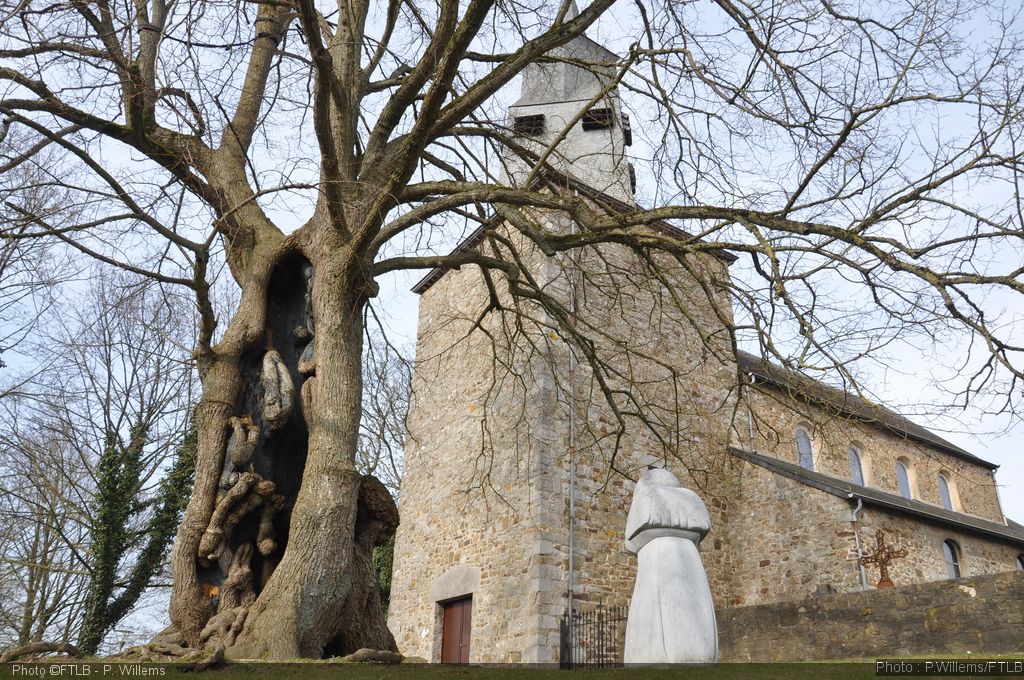



The Romanesque Saint-Etienne church in Waha and its stained-glass windows by Jean-Michel Folon
The Saint-Etienne church is a remarkable Romanesque-style edifice listed as a Major Walloon Heritage Site. It is surrounded by its ancient cemetery and protected by a linden tree that is several hundred years old. A sculpture of a Blanc Curé (White Monk) silently prays, sheltered by the venerable tree. The Saint-Etienne church is one of the oldest Romanesque churches in Belgium, and the only one still in possession of its dedication stone. The stone commemorates the consecration of the church, on 20 June 1050, by Théoduin, who was the bishop of Liège from 1048 to 1075.
An incredible array of elements of heritage are preserved in the church : the ornamental stone bearing Philippe II's coat of arms, as well as the shields of Luxemburg and the town of Marche, 16th c. baptismal fonts, a 16th c. Gothic theotheque (a sculpted tabernacle), tombstones from the 15th and 18th c., a 13th c. reliquary, a fragment of a 13th c. mural fresco, a fragment of a 16th c. Christ, as well as several works by the mysterious 'Maître de Waha' a 16th c. sculptor... One of the sculptor's most remarkable works is the nearby Calvary.
This remarkable heritage is enhanced by the fabulous array of colours that emerge from the stunning stained-glass windows designed by the well-known Belgian artist Jean-Michel Folon. The windows evoke the martyrdom of Saint Etienne, the parish's patron Saint. At the back of the church, an audiovisual montage presents us with the artist's testimony as well as comments on the major elements of heritage that are preserved in the church. At the front of the church, a second montage is dedicated solely to the works of the 'Maître de Waha'. You can admire several of his sculptures in the Museum of the Famenne, in Marche's town centre.
